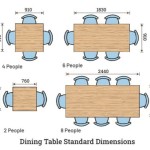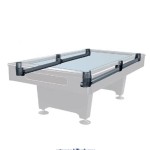Here’s an article about decorative vegetable garden ideas:
Decorative Vegetable Garden Ideas: Blending Beauty and Bounty
The integration of aesthetics and functionality in the garden has gained considerable traction in recent years. The concept of a purely utilitarian vegetable garden, while efficient, can often lack visual appeal. Decorative vegetable gardening seeks to bridge this gap by combining edible plants with ornamental elements, resulting in a space that is both productive and aesthetically pleasing. This approach involves thoughtful planning, plant selection, and the incorporation of design principles that create a harmonious and inviting outdoor environment.
The benefits of a decorative vegetable garden extend beyond mere aesthetics. Such gardens can enhance biodiversity, attract beneficial insects, and promote a deeper connection with nature. By diversifying the plant palette and incorporating companion planting techniques, the garden can become a self-sustaining ecosystem that requires less intervention and promotes healthier plant growth. Furthermore, the visual appeal of a decorative vegetable garden can increase its value as a recreational space, encouraging frequent visits and fostering a sense of well-being.
Planning and Design Considerations
The foundation of a successful decorative vegetable garden lies in careful planning and design. This process involves assessing the site's conditions, defining the garden's style, and selecting plants that complement both the aesthetic vision and the local climate. The following considerations are crucial in the planning phase.
Site Assessment: The initial step involves evaluating the site's characteristics, including sunlight exposure, soil type, drainage, and prevailing wind patterns. Understanding these factors is essential for selecting appropriate plant varieties and optimizing their placement within the garden. For instance, vegetables that require full sun, such as tomatoes and peppers, should be positioned in areas that receive at least six hours of direct sunlight per day. Conversely, leafy greens like lettuce and spinach can tolerate partial shade. Soil testing is also recommended to determine its nutrient content and pH level, allowing for necessary amendments to improve its fertility and drainage.
Garden Style: Defining the garden's overall style is fundamental to creating a cohesive and visually appealing space. Several garden styles can be adapted to decorative vegetable gardening, each with its unique characteristics and aesthetic appeal. A formal garden, characterized by symmetrical layouts and geometric shapes, can incorporate raised beds or parterres filled with neatly arranged vegetables and herbs. A cottage garden, on the other hand, embraces a more informal and romantic aesthetic, with a mix of flowers, vegetables, and herbs planted in a seemingly haphazard manner. Other styles, such as a Mediterranean garden or a Zen garden, can also be adapted to incorporate edible plants while reflecting their respective design principles.
Plant Selection: Choosing the right plants is crucial for both the aesthetic appeal and the productivity of the garden. Consider selecting vegetable varieties with attractive foliage, colorful fruits, or interesting textures. For example, Swiss chard with its vibrant stems, ornamental peppers with their fiery hues, and artichokes with their architectural form can all add visual interest to the garden. Incorporating herbs with fragrant foliage, such as lavender, rosemary, and thyme, can also enhance the sensory experience of the garden. Furthermore, companion planting techniques can be employed to promote beneficial interactions between plants, such as deterring pests or improving soil fertility.
Hardscaping Elements: The inclusion of hardscaping elements, such as pathways, fences, and water features, can significantly enhance the structure and visual appeal of the garden. Pathways made of gravel, mulch, or stepping stones can provide easy access to different areas of the garden while also adding texture and visual interest. Fences or trellises can serve as both functional supports for climbing vegetables and decorative features that define the garden's boundaries. Water features, such as fountains or ponds, can add a calming and refreshing element to the garden while also attracting beneficial insects and pollinators.
Design Principles for Visual Harmony
Creating a visually harmonious decorative vegetable garden requires the application of fundamental design principles, such as balance, proportion, rhythm, and color. These principles guide the arrangement of plants and hardscaping elements to create a cohesive and aesthetically pleasing space.
Balance: Balance refers to the distribution of visual weight within the garden. Symmetrical balance involves creating mirror-image arrangements on either side of a central axis, while asymmetrical balance achieves equilibrium through the placement of different elements of varying sizes and shapes. Either approach can be effective in creating a visually appealing garden, depending on the desired aesthetic.
Proportion: Proportion refers to the relationship between the size of different elements in the garden. Maintaining appropriate proportions is essential for creating a sense of harmony and avoiding visual imbalances. For example, overly large structures or plants can overwhelm smaller spaces, while undersized features may appear insignificant.
Rhythm: Rhythm refers to the repetition of elements in the garden to create a sense of movement and visual interest. This can be achieved through the repeated planting of specific plants, the use of recurring patterns in hardscaping, or the placement of objects at regular intervals. Rhythmic patterns can guide the eye through the garden and create a sense of flow.
Color: The judicious use of color can significantly impact the overall aesthetic of the garden. Consider using a color palette that complements the surrounding landscape and reflects the desired mood. Warm colors, such as reds, oranges, and yellows, can create a sense of energy and excitement, while cool colors, such as blues, greens, and purples, can evoke feelings of calmness and tranquility. Contrasting colors can be used to create visual interest and highlight specific features.
Practical Considerations for Maintaining a Decorative Vegetable Garden
While the aesthetic appeal of a decorative vegetable garden is a primary focus, practical considerations for its maintenance are equally important. Ensuring the health and productivity of the garden requires diligent attention to watering, fertilizing, pest control, and general upkeep.
Watering: Proper watering is crucial for the health and growth of vegetables. The frequency and amount of watering will depend on the specific needs of the plants, the soil type, and the prevailing weather conditions. Generally, vegetables require consistent moisture, especially during periods of drought. Drip irrigation systems or soaker hoses can be efficient methods for delivering water directly to the roots of plants, minimizing water waste and reducing the risk of foliar diseases.
Fertilizing: Vegetables require adequate nutrients to thrive and produce abundant harvests. Soil testing can help determine the specific nutrient deficiencies and guide the selection of appropriate fertilizers. Organic fertilizers, such as compost, manure, and bone meal, can provide a slow-release source of nutrients while also improving soil structure and fertility. Regular applications of fertilizer, following the manufacturer's instructions, can help ensure optimal plant growth and yields.
Pest Control: Controlling pests and diseases is essential for protecting the health and productivity of the vegetable garden. Integrated pest management (IPM) strategies can be employed to minimize the use of chemical pesticides and promote a more sustainable approach to pest control. IPM involves a combination of preventative measures, such as selecting disease-resistant varieties, practicing crop rotation, and encouraging beneficial insects, as well as targeted interventions when pest populations reach damaging levels. Handpicking pests, using insecticidal soap, or applying organic pesticides can be effective methods for controlling specific pests without harming beneficial organisms.
General Upkeep: Regular maintenance is essential for keeping the decorative vegetable garden looking its best. This includes tasks such as weeding, pruning, staking, and mulching. Weeding can be done manually or with the use of herbicides, depending on the gardener's preference. Pruning can help improve air circulation, promote bushier growth, and remove dead or diseased foliage. Staking or trellising can provide support for vining vegetables, such as tomatoes and cucumbers, preventing them from sprawling on the ground. Mulching with organic materials, such as straw, wood chips, or shredded leaves, can help suppress weeds, retain moisture, and regulate soil temperature.
The successful implementation of decorative vegetable garden ideas requires a holistic approach that considers both aesthetic and practical aspects. By carefully planning the design, selecting appropriate plants, applying design principles, and implementing effective maintenance practices, it is possible to create a garden that is both beautiful and productive, providing a source of fresh vegetables and a space for relaxation and enjoyment.
:strip_icc()/102690613-18fec11a4c184680a9ee508b1d53aedd.jpg?strip=all)
12 Tips For Pretty Vegetable Gardens That Yield Lots Of Compliments

Who Says A Kitchen Garden Can T Be Beautiful Finegardening

Small Vegetable Garden Ideas 15 Ways To Maximize Your Space
:strip_icc()/100215192-91ba7fedeb064d0682fa1b8d4e433827.jpg?strip=all)
12 Tips For Pretty Vegetable Gardens That Yield Lots Of Compliments

Vegetable Garden Ideas Designs And Layouts For Backyards

Vegetable Garden Raised To The Rank Of Art 35 Decorative Gardens For Inspiration My Desired Home Design Backyard

Decorative Vegetable Garden Ideas Google Search Design Planning

Who Says A Kitchen Garden Can T Be Beautiful Finegardening

40 Vegetable Garden Design Ideas What You Need To Know

75 Vegetable Garden Landscape Ideas You Ll Love November 2024 Houzz








